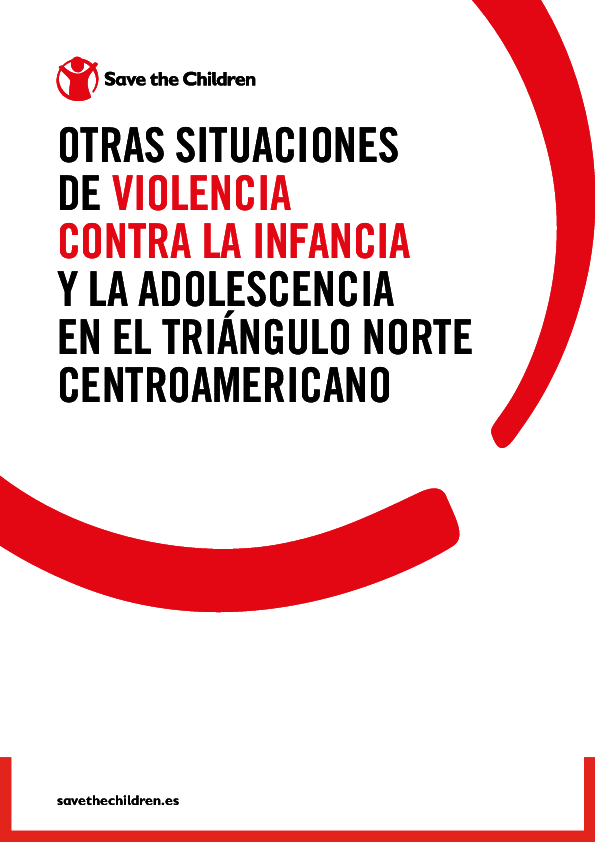
Study: Research
Otras Situaciones de Violencia Contra la Infancia y la Adolescencia en el Triángulo Norte Centroamericano
Publication year:
2018
Spanish
Format:
pdf (2.2 MiB)
Publisher:
Save the Children Spain
El presente estudio incorpora las dos miradas más frecuentes sobre el término Otras Situaciones de Violencia (OSV) en años recientes; y las actualiza y aterriza a la situación de la Infancia y la Adolescencia en el Triángulo Norte Centroamericano. De un lado la identificación de la violencia de maras y pandillas como uno más de los males violentos que afectan a los países del Triángulo Norte Centroamericano, una manifestación de una espiral de violencia social, estructural o heredada y no erradicada. De otro la asimilación a un tipo de situaciones en las que las autoridades a menudo recurren al uso extensivo de la fuerza militar o policial para mantener o restaurar la ley y el orden con consecuencias tan devastadoras y letales para la población civil como las de un conflicto armado, surgida en el ámbito humanitario. En este marco, en el estudio se integran como dos premisas no opuestas la existencia de una violencia estructural y de una violencia estructurada, entendiendo que ésta última supone un salto cualitativo, en donde la existencia de grupos delictivos armados y organizados impulsa y re-estructura el ejercicio violento de forma protagónica, con un ejercicio propio de la misma (lógicas y dinámicas internas propias) y una contribución relevante a las “clásicas” manifestaciones violentas.
The present study incorporates the two most frequent views on the term Other Situations of Violence (OSV) in recent years; and it updates and brings them to the situation of Childhood and Adolescence in the Central American North Triangle. On the one hand, the identification of the violence of gangs and gangs as one more of the violent evils that affect the countries of the Central American North Triangle, a manifestation of a spiral of social violence, structural or inherited and not eradicated. On the other the assimilation to a type of situations in which the authorities often resort to the extensive use of military or police force to maintain or restore law and order with consequences as devastating and lethal for the civilian population as those of a conflict armed, arising in the humanitarian field. Within this framework, the study integrates the existence of structural violence and structured violence as two opposing premises, understanding that the latter represents a qualitative leap, in which the existence of armed and organized criminal groups drives and re-structures the violent exercise of protagónica form, with an own exercise of the same one (logics and own internal dynamics) and a relevant contribution to the “classic” violent manifestations.
Read full abstract
Authors
View & Download
Document information
Publisher
Format
Content type
Region
Rights
© Author/Publisher
Found a mistake? Help us improve!
If you have noticed a document assigned to the wrong author or any other inaccuracies, let us know! Your feedback helps us keep our data accurate and useful for everyone.
Share
Link
